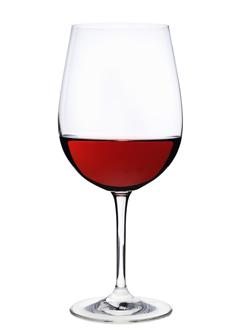Humboldt's Humble Swamp
On the rolling Saskatchewan prairie, about 70 miles east of the city of Saskatoon, sits the pleasant community of Humboldt, population: 6,000. It was here that in the late 1970s and early 1980s, a remarkable scientist conducted an equally remarkable experiment, the results of which have impacted many communities around the world.
Smaller communities such as Humboldt—whether in Canada or just about anywhere on the planet—are faced with the constant challenge of safely disposing of sewage. This may not be a pleasant topic to contemplate, but sewage disposal is a major role of civic and provincial governments anywhere. Sewage treatment that will render effluent harmless to the environment is actually very expensive. In many places the cost is so prohibitive that effluent is simply dumped in rivers, lakes or seas.
Dr. G. Lakshman, a researcher at the Saskatchewan Research Council in Saskatoon, and recent arrival from India, was acutely aware of the problem. In a series of studies funded by the Government of Saskatchewan and Ducks Unlimited, Lakshman's team came up with some stunning discoveries that have since been applied around the world, greatly improving the quality of life for many.
The study, "A Demonstration Project at Humboldt to Provide Tertiary Treatment to Municipal Effluent Using Aquatic Plants," (Lakshman, G: Saskatchewan Research Council. Saskatoon: Saskatchewan Research Council, 1983. SRC technical report, no. 151), details the remarkable capacity of two very humble plants: the cattail and the bulrush.
Build Plants or Grow Plants?
Humboldt needed a new treatment facility that it could not afford. Lakshman was given permission to develop two very small and very shallow lagoons outside of the community. In their carefully designed 8-inch deep trenches, workers planted thousands of cattails or bulrushes. Lakshman believed that marsh plants in general, and cattails in particular, had insatiable appetites for sewage, and were perhaps the root of the solution for waste treatment in such areas. He reasoned such plants normally exist at the bottom of drainage basins, and are at the receiving end of all the material that eventually gets washed into low areas by rain and gravity.
Lakshman's report explains that the reed's capacity for neutralizing harmful effects of pollutants like nitrates and phosphates borders on the miraculous. Any other plants absorb only the nutrients they require, but cattails take in as much as they can get. The Research Council's report reveals how effectively the reeds handle waste. It identifies, for instance, the special antibiotic secretions released by the cattail that neutralize bacteria, including e-coli and coliform. The absorption and neutralization of dangerous chemicals was noted. They trapped toxic materials in their tissue, and rendered the toxins generally harmless. The report explains that the plants can even process heavy metals such as mercury, phenols, cyanide and zinc, and break down hydrogen sulfide. They were observed even to detoxify runoff containing pesticides and herbicides.
The speed at which the plants work was astounding. The little lagoons could process twelve months of sewage in six months. The actual neutralizing cycle took only 21 days, after which the released water was found to be comparable with the water in some of Saskatchewan's cleanest lakes.
It was also noted that with modern sewage treatment plants there was still the problem with odour, yet in the Humboldt study it was noted that the effluent quickly became free of foul smell. The mechanism that causes this is not yet known. When we think of swamps we often think of mosquitos, but the study also shows the cattails secrete a larvicide from their root that kills mosquito larvae.
Wonderful Wetlands; Marvelous Marshes
As a result of this study, the Saskatchewan government began to recommend feedlots and farm operations leave wetlands undeveloped, and plant cattails in dugouts, ditches and in zones of low gradient drainage to render runoff harmless. Even more amazing is that, by the end of the growing season, the reeds, despite their rather obnoxious diet, are safe to harvest and use for animal feed.
A Canadian Water Resources Journal report reinforces the findings: "Marshes also function as natural sediment traps by trapping sediment with emergent vegetation, slowing flows and allowing soil particles to fall out of suspension. If retained or developed, they not only help reduce erosion, but improve water quality as well. In fact, wetlands have their own built-in water treatment 'plants' such as cattail and bulrush which are such efficient water purification sites that studies suggest wetlands may well be the waste-water treatment site of the future for many rural communities" ("Wetlands and Water Management," January 2013).
The report goes on to describe extensive research into the ability of these remarkable plants to improve water quality, explaining the specific biological processes that reduce overall levels of toxins, microbes and other contaminants from the filthiest of polluted water sources—and documenting how they do so in some impressively short periods of time.
In another Saskatchewan community, that of Vonda, a similar project has been operating since 1983. The Mayor, Dan Sembalerus states: "The system has been trouble-free, requiring no changes or modifications" (R. Lyseng, "Are wetlands Mother Nature's outhouse, or do they deserve more respect?" The Western Producer, January 8, 2015).
Design or Chance?
In our rushed world, with its fixation on modern technology, we so easily overlook the design that is crafted into the planet on which we live. It is truly folly to write off everything that exists as the work of chance, when it in fact is the work of a Creator whose genius is reflected in the cycles that surround us in nature. The mechanisms to deal with toxins and waste were not overlooked when the miraculous chemical digesters we know as the cattail and the bulrush were created. They labour free of charge, do excellent work and never go on strike. When we take a moment to stop and reflect on aspects of how the earth functions, the fact that there is a great God who, with incredible wisdom, has lovingly put together the ecosystems, is unmistakable.
There will soon come a time when God will establish a true, righteous government on Earth, ruled by His son Jesus Christ, and man will be informed of all aspects of how the world was intended to work and become beautiful and safe.
At that time the humble cattail and the lowly swamp, in which it lives and works, will be recognized for the brilliant creations they really are.






